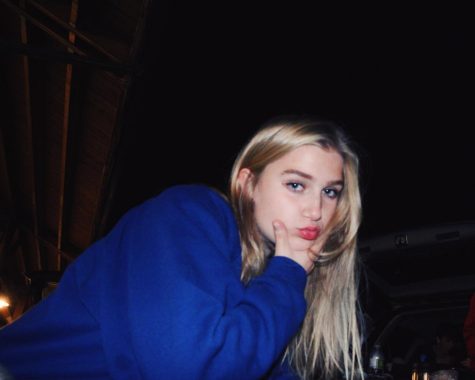Art from the unfamiliar: how 100 gecs brings bad taste back in style
The tree in the “1000 Gecs” album cover has become an insignia for fans, many of whom have recreated the famous image.
September 15, 2020
Older generations are known to bash their younger counterparts for their taste in art, especially music. With the explosive success of musical duo Laura Les and Dylan Brady, known as 100 Gecs, Generation Z is bound to seem crazier than ever.
To call their music experimental is off the mark. Some would even argue that to call their music, well, music, is off the mark. 100 Gecs displays bravery in maximalist lawlessness, with twists, turns and winding roads in every measure. It is as wondrous as it is jarring, which has drawn in a slew of devoted fans. On the other hand, it has drawn in a sizable share of devoted critics.
Either way, 100 Gecs and its growing presence in the music industry has a way of making people react. But what have Les and Brady done to elicit this response so effectively? And, as the age-old question posed towards artists everywhere goes, what does it all mean?
100 Gecs, with its ludicrously auto tuned vocals blasted over a sonorous bass, can easily feel like a punch in the face upon first impression. Part of what is so engrossing about it, though, is that the more carefully you listen, the clearer it becomes that Les and Brady have an undeniable artistic talent. Many of their melodies, if carried through with more subtlety, could easily make their way onto radio stations and soundtracks, living peacefully but importantly in the background. But through the lens of two harum-scarum creators, there would be no point in art if it were taken too seriously. The purpose of mainstream music is to entertain, but it fails to do what 100 Gecs does with closed eyes: actually have fun.
At the time of 100 Gecs’ album entitled “1000 Gecs,” the 2010’s were coming to a close, leaving an open door for new trends. It also left people to wonder what would circle back around from previous decades. One subgenre that had started making its way into the mainstream is known as “Y2K,” short for year 2000. Within this subgenre, clothing, editing techniques and music are based around anything that would earn Paris Hilton’s stamp of approval. Les and Brady, having spent their youth during these early stages of social media, are strong in their homage to this period.
Current teenagers on the Internet bearing low-waisted jeans and hot pink first put a bad taste in the majority’s mouth, with many of the era’s trends now perceived as tacky. As 2020 has progressed, however, that has become the selling point. “1000 Gecs” had already gained significant traction towards the end of 2019, but exploded during quarantine as more people embraced their long forgotten Myspace-esque traditions.
Over the past decade, social media platforms such as Tumblr and TikTok have established a pattern as a result of the inconceivable amount of material they contain. Adolescents are exposed to boundless content from across the globe, advancing the rate of rising trends. But what goes up must come down, and once content has been experienced a single time, it becomes old news. It is not uncommon for a platform’s users to express nostalgia for its earlier eras. What is concerning, however, is the direction that this nostalgia is going in as it is felt for increasingly recent periods of time. Now, extensive users across TikTok have already expressed their longing for the way the app was at the start of quarantine.
The accessibility of media, while convenient, is devoid of individual experience. So, in search of that gratification, users are hellbent on finding unexplored corners of the Internet. People want to see what none of their peers have seen, to listen to a sound unheard by the rest. This is the exact mentality that sets the spotlight on artists as anarchic as 100 Gecs. Furthermore, the internet does not categorize media as good or bad; it only reacts to levels of activity. The sound of 100 Gecs, regardless of how pleasantly it is individually received, is so unorthodox that users cannot stay away nor keep it to themselves. Les and Brady have created something worth stopping to stare at. They know how to draw a crowd, despite the current inability for one to exist in person.









